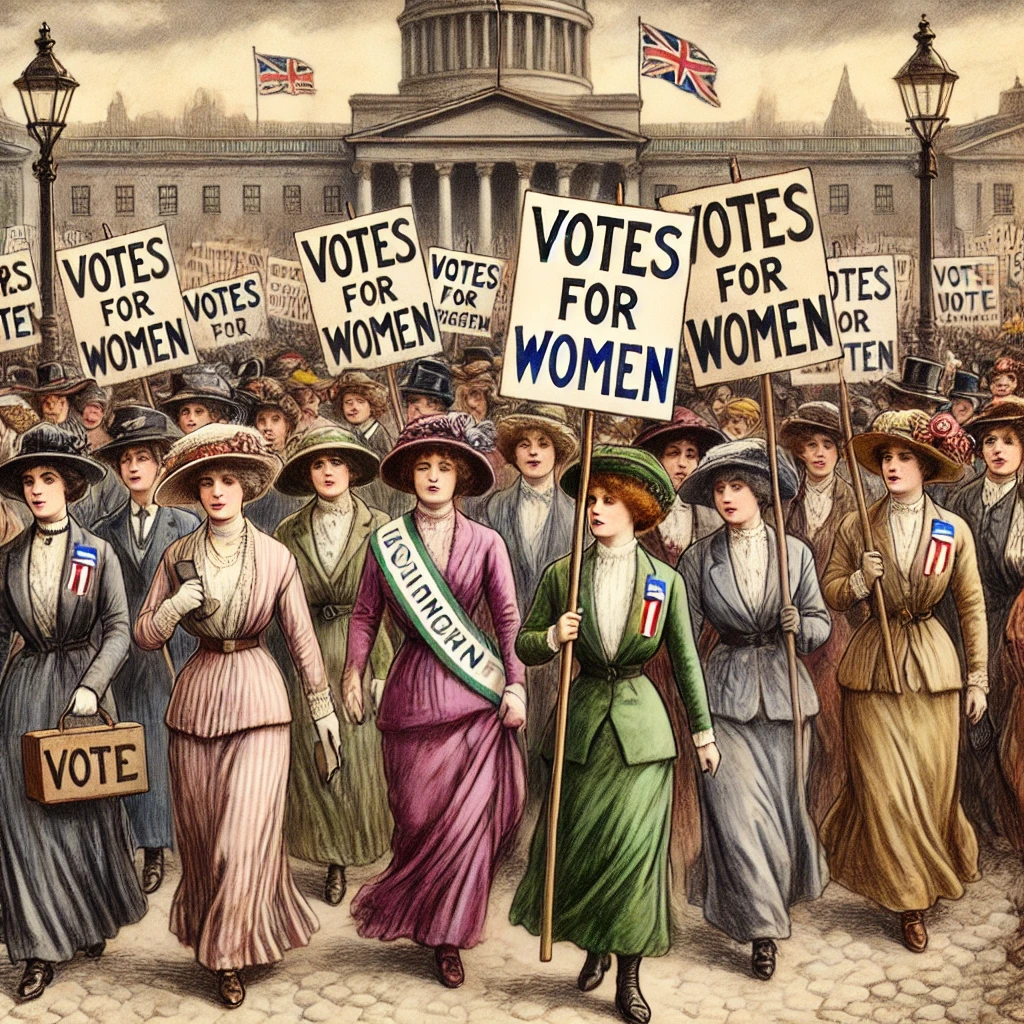Introduction
The 1920s marked a significant turning point in the global struggle for women’s suffrage. This decade saw the culmination of decades of activism, leading to groundbreaking legal changes that granted women the right to vote in many countries. The suffrage movements of this era not only challenged traditional gender roles but also laid the foundation for broader political and social reforms that continue to shape modern democracies. This article explores the role of women’s suffrage movements in the 1920s, their key achievements, challenges, and the long-lasting impact they have had on contemporary democratic societies.
The Historical Context of Women’s Suffrage
Before the 1920s, women in many parts of the world were denied the right to vote and participate in political decision-making. The 19th century had seen the rise of women’s rights movements, particularly in the United States, the United Kingdom, and parts of Europe. Organizations such as the National American Woman Suffrage Association (NAWSA) in the U.S. and the Women’s Social and Political Union (WSPU) in Britain played a crucial role in advocating for equal voting rights.
The momentum for suffrage gained significant traction after World War I. During the war, women took on roles traditionally held by men, proving their capabilities in industries, agriculture, and public services. Their contributions challenged the prevailing belief that women were unfit for political participation, creating a strong case for their enfranchisement.
Key Achievements of Women’s Suffrage Movements in the 1920s
The 1920s witnessed landmark victories for women’s suffrage across various countries. Some of the most significant achievements include:
- United States (1920): The ratification of the 19th Amendment granted American women the right to vote, following decades of activism by suffragists like Susan B. Anthony, Elizabeth Cady Stanton, and Alice Paul.
- United Kingdom (1928): While some British women had gained voting rights in 1918, the Representation of the People Act 1928 extended suffrage to all women over the age of 21, granting them equal voting rights with men.
- Canada (1929): The landmark Persons Case ruled that women were legally considered “persons” under Canadian law, allowing them to participate in politics and hold public office.
- Germany (1919-1920s): Following the end of World War I, Germany’s new constitution granted women full voting rights, enabling their active participation in the Weimar Republic’s democracy.
- France and Italy: While women in these countries did not gain full suffrage until later (1944 in France and 1945 in Italy), the movements of the 1920s laid crucial groundwork for later victories.
Challenges Faced by Women’s Suffrage Movements
Despite these successes, suffrage movements faced significant opposition and challenges:
- Cultural and Social Resistance: Many societies upheld traditional gender norms that viewed women as unsuitable for political engagement.
- Legal and Political Barriers: Laws and constitutions in several countries explicitly restricted women’s participation in governance.
- Internal Divisions: Some suffrage movements were divided over strategy, with moderate activists favoring peaceful lobbying and radical suffragettes resorting to civil disobedience.
- Intersectional Disparities: While white women in many countries gained suffrage, women of color, indigenous women, and lower-class women often faced additional discrimination and legal obstacles in exercising their voting rights.
Impact of Women’s Suffrage on Modern Democracies
The achievements of the 1920s suffrage movements had a profound and lasting impact on modern democratic societies. Their influence can be seen in several key areas:
1. Expansion of Democratic Participation
By securing voting rights, women increased voter turnout and diversified political representation. Today, women’s participation in elections has strengthened democratic governance and policy-making.
2. Political Representation and Leadership
Women’s suffrage paved the way for greater female participation in politics. Many countries now have women in key leadership positions, including heads of state, parliamentarians, and ministers.
3. Advancement of Gender Equality
The success of suffrage movements led to broader discussions on women’s rights, including workplace equality, reproductive rights, and education reforms. Gender equality remains a central issue in contemporary democratic societies.
4. Legislative Reforms and Social Policies
With women gaining political power, issues affecting families, children, and social welfare have received more attention. Policies on healthcare, maternity leave, and education have improved significantly in many nations.
5. Global Influence and Ongoing Activism
The success of early suffrage movements inspired later feminist movements, advocating for equal pay, anti-discrimination laws, and protection against gender-based violence. The principles established in the 1920s continue to influence human rights activism worldwide.
Conclusion
The women’s suffrage movements of the 1920s were pivotal in shaping modern democracies. Their relentless efforts not only secured voting rights for women but also set in motion broader political and social changes. Today, as societies continue to evolve, the legacy of these movements serves as a reminder of the importance of political participation, equality, and justice in democratic governance. While progress has been made, the struggle for full gender equality remains an ongoing journey that builds upon the foundations laid by the suffragists of the past.




